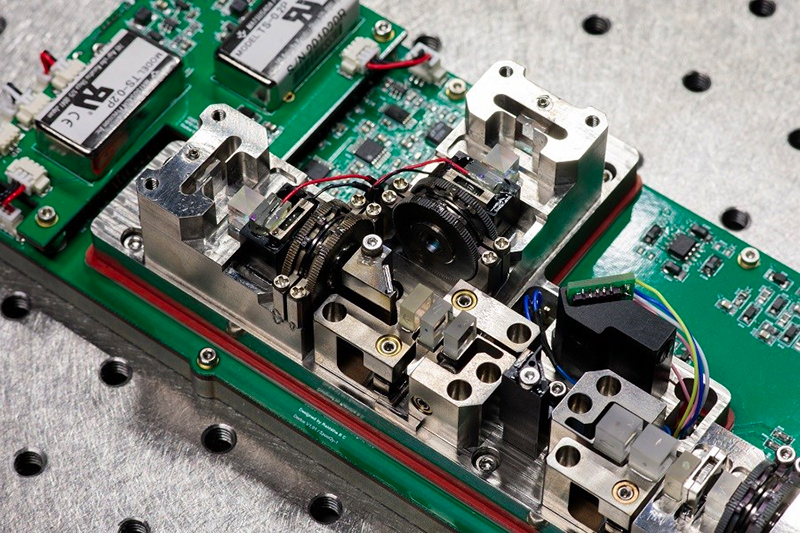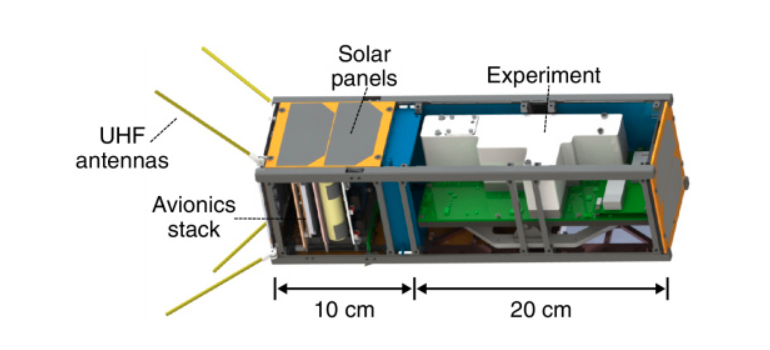Products You May Like
In the strange field of quantum physics, quantum entanglement – what Einstein called “spooky action at a distance” – stands out as one of the most intriguing phenomena. And now scientists just managed to successfully demonstrate it again, this time onboard a CubeSat satellite orbiting Earth.
Quantum entanglement is where two particles become inextricably linked across a distance, so that one serves as an indicator of the other in a certain aspect. That unbreakable link might one day form the basis of a super-fast, super-secure quantum internet.
While a quantum internet is still some way off, if we want to make it work, it’s going to require something other than optical fibres.
So scientists are experimenting with quantum entanglement in all kinds of new and improved ways – including out in space.
In this case, a small CubeSat satellite, appropriately called SpooQy-1, was used to produce pairs of entangled photos using a blue laser diode and non-linear crystals.
 The quantum entanglement instrument. (Centre for Quantum Technologies, National University of Singapore)
The quantum entanglement instrument. (Centre for Quantum Technologies, National University of Singapore)
“In the future, our system could be part of a global quantum network transmitting quantum signals to receivers on Earth or on other spacecraft,” says quantum physicist Aitor Villar, from the National University of Singapore.
“These signals could be used to implement any type of quantum communications application, from quantum key distribution for extremely secure data transmission to quantum teleportation, where information is transferred by replicating the state of a quantum system from a distance.”
The achievement is impressive on a number of levels: not only did it happen in actual space, it was done on a piece of equipment less than 20 cm by 10 cm (7.87 inches by 3.94 inches), and weighing under 2.6 kilograms (5.73 pounds).
 (Villar et al., Optics, 2020)
(Villar et al., Optics, 2020)
While the Chinese satellite Micius has the honour of being the first to manage quantum communication from space, SpooQy-1 is smaller. That compactness is going to be crucial if we’re going to use satellites as the foundation for future quantum communications.
The CubeSat was launched last year from the International Space Station, but it was specially designed in such a way as to shield the entangled photon source from the pressures and temperatures of a launch from Earth, and an orbit around it.
The photon-pairs onboard were entangled at temperatures of between 16 degrees and 21.5 degrees Celsius (60.8 degrees and 70.07 degrees Fahrenheit).
Not only that, but the system was designed to operate while using as little power as possible. The size, the robustness and the low power draw of SpooQy-1 are all notable for researchers exploring whether a satellite-based quantum internet might be possible.
No quantum communication has been attempted with the satellite yet, but this sets the foundation for it. Scientists are looking for alternative ways to transmit quantum-encoded information, because it doesn’t work with standard optical fibres over longer distances.
In the next couple of years, the team hopes to work on a quantum receiver that can communicate with a CubeSat satellite like this, and to improve the overall ability of CubeSat devices to support quantum networks.
“Progress toward a space-based global quantum network is happening at a fast pace,” says Villar. “We hope that our work inspires the next wave of space-based quantum technology missions and that new applications and technologies can benefit from our experimental findings.”
The research has been published in Optica.
